Wearing safety glasses in hazardous environments is crucial to prevent eye injuries caused by chemical splashes, flying debris, and other workplace hazards. Finding the right solution to wearing safety glasses over their existing eyewear can be challenging for individuals who wear prescription glasses. These individuals often face issues related to comfort, fit, and the effectiveness of the safety glasses.
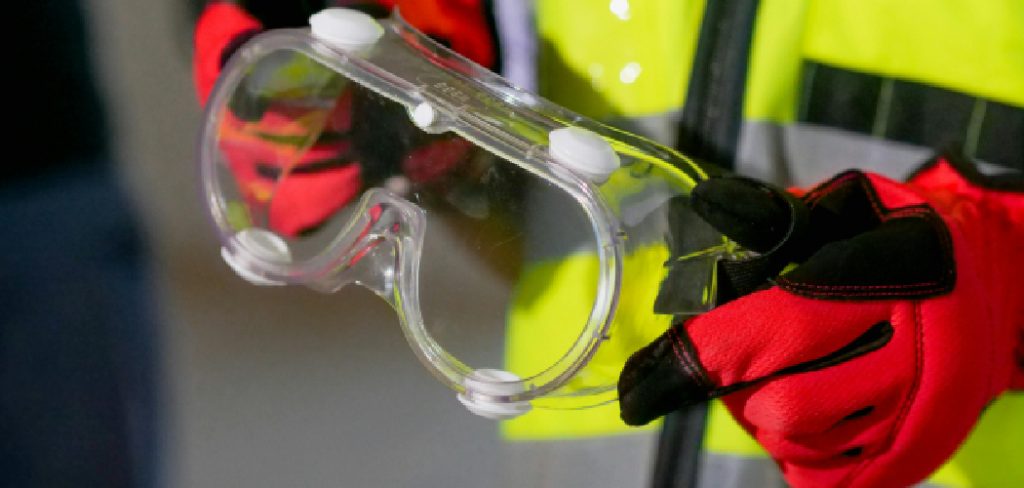
This article will provide an in-depth look at how to wear safety glasses over glasses, addressing common challenges and offering practical steps to ensure both protection and comfort. We’ll explore various options like over-the-glasses (OTG) safety glasses, safety goggles, and prescription safety glasses and provide recommendations for choosing the most suitable type for your needs. This guide will teach individuals how to properly prepare their glasses, wear the appropriate safety gear, and maintain their eyewear to ensure long-term safety and clarity.
Understanding the Need for Safety Glasses
Workplace safety regulations and standards mandate using safety glasses to protect employees from occupational hazards that could result in eye injuries. Various regulatory bodies, such as the Occupational Safety and Health Administration (OSHA) in the United States, have established guidelines to ensure that employers provide adequate eye protection in environments where hazards are present. These regulations often outline the specific types of safety glasses required based on the nature of the work and the potential risks involved.
Hazards in the workplace that necessitate the use of safety glasses include but are not limited to, chemical splashes, flying debris, dust, and radiation. For instance, laboratory workers handling corrosive substances must wear safety glasses to prevent chemical burns to the eyes. In contrast, construction workers are at risk from flying particles that could cause physical trauma. Even office workers might face unexpected hazards like printer toner spills or accidental splashes from cleaning solutions.
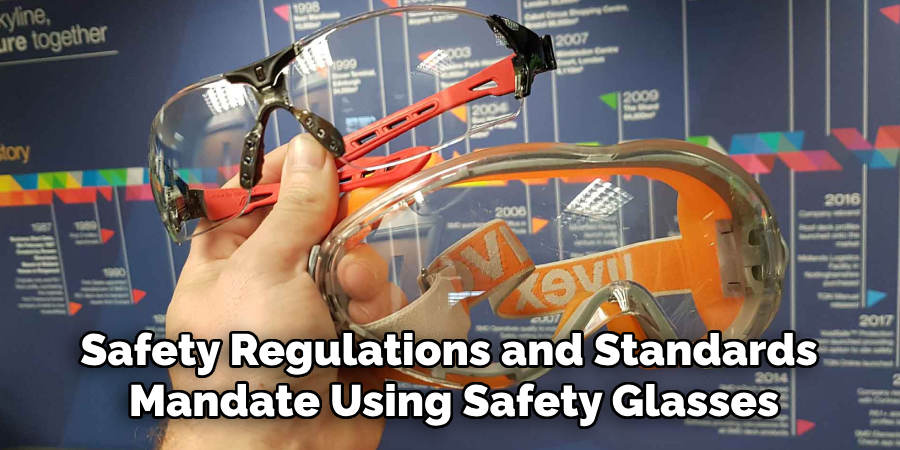
Protecting both prescription glasses and the eyes is critical. Although prescription glasses are essential for vision correction, they are not designed to withstand the impact of workplace hazards. Wearing proper safety glasses over prescription glasses ensures that individuals maintain clear vision while safeguarding their eyes from potential injuries. This dual protection complies with safety standards and offers peace of mind in potentially dangerous work environments.
Choosing the Right Type of Safety Glasses
Selecting the appropriate type of safety glasses is vital for ensuring protection and comfort, especially for those who wear prescription glasses. Several styles are available, each offering distinct advantages depending on your specific needs and work environment.
Overview of Different Styles
- Over-the-Glasses (OTG) Safety Glasses: These safety glasses are designed to fit comfortably over your existing prescription glasses. They come in various sizes and styles to accommodate different eyewear shapes and provide ample space to prevent pressure on the temples.
- Prescription Safety Glasses: These glasses eliminate the need for additional protective eyewear by combining vision correction with safety features. Custom-made to your prescription, they conform to safety standards to provide reliable impact resistance.
- Safety Goggles: Safety goggles enclose the eyes entirely, offering a higher level of protection against dust, chemicals, and other particles. They are available with adjustable straps and enough internal space to be worn over prescription glasses.
Factors to Consider
Choosing the right type of safety glasses involves evaluating several factors:
- Comfort: Ensure the safety glasses fit well and do not cause discomfort, especially if worn for extended periods.
- Fit: Look for safety glasses with adjustable features such as temples, nose bridges, and straps to achieve a secure fit over your prescription glasses.
- Level of Protection: Consider the specific hazards present in your work environment to select safety glasses that provide adequate protection.
- Compatibility with Prescription Glasses: Ensure there is enough space for your prescription glasses and avoid any models that might cause pressure points or obscure your vision.
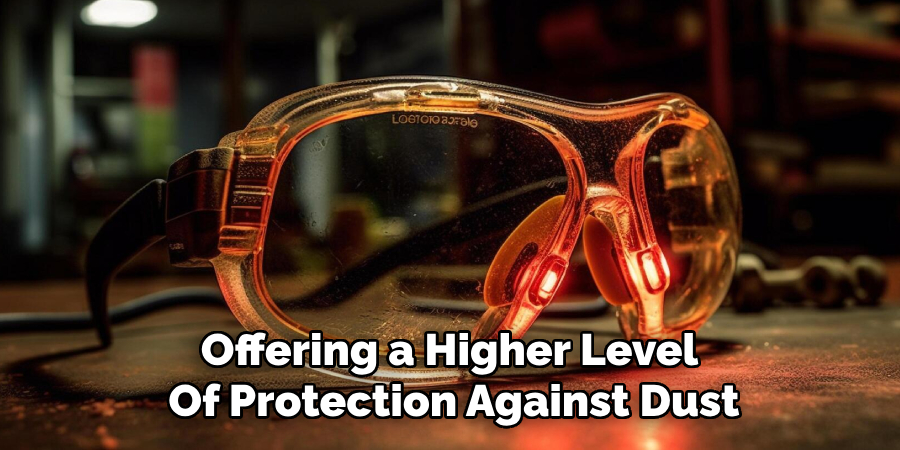
Recommendations for Popular OTG Safety Glasses Brands
For high-quality OTG safety glasses, consider brands like 3M, Pyramex, and Uvex. These brands offer a range of styles that prioritize both protection and comfort, ensuring you can safely and efficiently perform your tasks while maintaining clear vision.
Tools and Materials Needed
To ensure the proper use and maintenance of your safety glasses, you will need the following items:
- OTG safety glasses
- Prescription glasses
- Anti-fog spray (optional)
- Cleaning cloth (optional)
- Carrying case (optional)
Preparing Your Glasses
Maintaining clear vision begins with ensuring that your prescription and safety glasses are clean and free from smudges or debris. Clean your prescription glasses using a gentle lens cleaner and a soft microfiber cloth to avoid scratches. Follow this by cleaning your safety glasses similarly, paying special attention to any areas that might have accumulated dirt or dust. If you will be working in humid or high-temperature environments, applying an anti-fog spray to both sets of glasses is advisable.
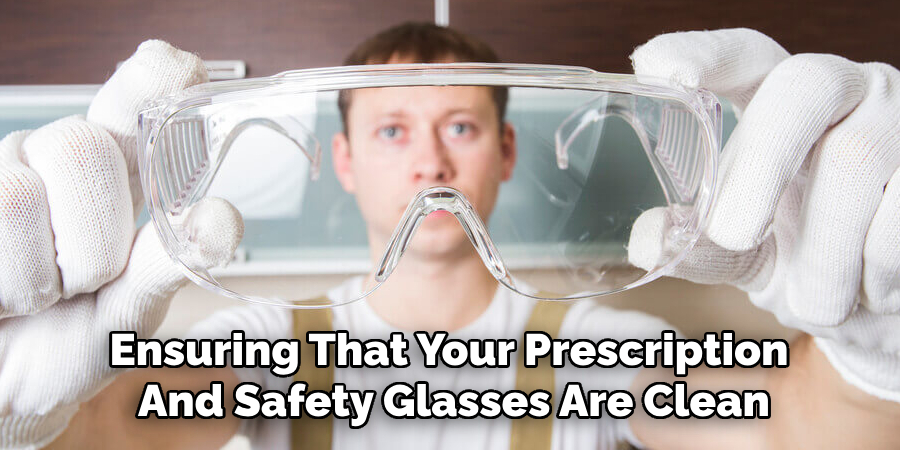
This spray helps to prevent fogging, which can obscure your vision and pose additional hazards. Make sure your prescription glasses fit securely and comfortably on your face before putting on your safety glasses. Adjust the temples and nose bridges as needed to ensure a snug yet comfortable fit, allowing you to focus on your tasks without distraction.
How to Wear Safety Glasses Over Glasses: Wearing Over-the-Glasses (OTG)
Step-by-Step Guide to Wearing OTG Safety Glasses
1. Selecting the Right Size and Style for Your Prescription Glasses
Choosing OTG safety glasses that fit well over your prescription glasses is crucial for comfort and protection. Consider the dimensions of your prescription glasses, including width and height, and compare them to the internal space of the OTG safety glasses. Brands like 3M, Pyramex, and Uvex often provide size charts to help you select the appropriate model.
2. Positioning Your Prescription Glasses Comfortably on Your Face
Before putting on OTG safety glasses, position your prescription glasses securely on your face. Ensure that they sit well on your nose bridge and behind your ears, providing a stable and comfortable fit. This setup will form the foundation for effectively wearing your OTG safety glasses.
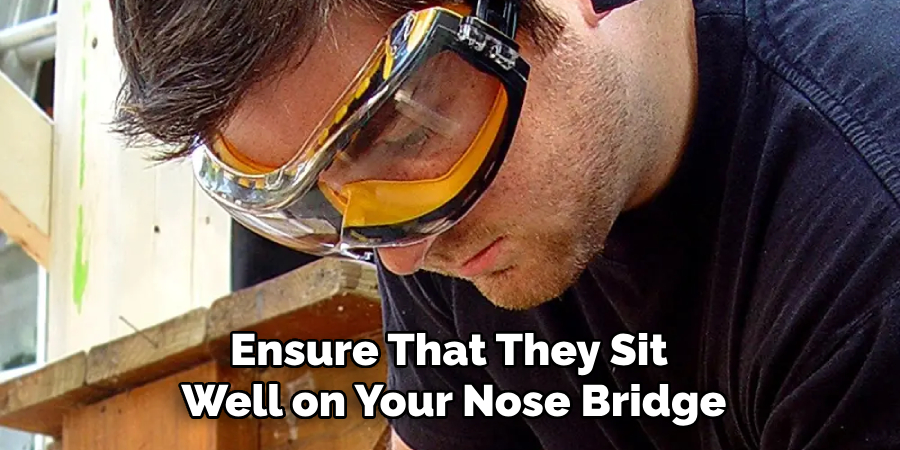
3. Sliding the OTG Safety Glasses Over Your Prescription Glasses
With your prescription glasses in place, carefully slide the OTG safety glasses over them. Start by holding the OTG safety glasses with both hands and gently guiding them over your prescription frames. Ensure the lenses of both glasses are aligned to maintain clear vision.
4. Adjusting the Temples and Nose Bridge for a Secure and Comfortable Fit
Once the OTG safety glasses are in position, adjust the temples and nose bridge to achieve a snug yet comfortable fit. Many OTG safety glasses come with adjustable features that allow you to customize the fit to avoid any discomfort during prolonged use.
5. Ensuring There Is No Pressure on the Prescription Glasses or Temples
Ensuring that the OTG safety glasses do not exert undue pressure on your prescription glasses or temples is essential. Any pressure points can cause discomfort and might affect your vision. Adjust the OTG frames as necessary to alleviate any tension.
6. Checking for Gaps That Could Allow Debris to Enter
After fitting the OTG safety glasses, check for any gaps around the frames’ sides, top, and bottom. These gaps can allow debris, dust, or other hazardous particles to enter, compromising eye protection. If gaps are present, adjust the fit again or consider a different model to ensure complete protection.
Using Prescription Safety Glasses
As an alternative to OTG safety glasses and goggles, prescription safety glasses provide an integrated solution for those needing vision correction while maintaining eye protection. These custom-made glasses combine your prescription lenses with impact-resistant and safety-rated frames, ensuring both clear vision and protection from workplace hazards.
Steps to Acquire Prescription Safety Glasses
- Visiting an Optometrist to Get the Correct Prescription:
Begin by scheduling an eye exam with a licensed optometrist. They will evaluate your vision to determine the precise prescription needed for your lenses. Make sure to inform your optometrist that you require prescription safety glasses so they can provide comprehensive recommendations.
- Ordering Prescription Safety Glasses from a Certified Provider:
Once you have your prescription, choose a certified provider specializing in prescription safety glasses. Many reputable brands and suppliers offer online services where you can upload your prescription and select suitable safety frames and lenses.
- Ensuring the Glasses Meet Safety Standards:
It’s crucial to ensure that the prescription safety glasses you order meet the necessary safety standards for your workplace. Look for certifications such as ANSI Z87.1 in the United States, which indicate that the glasses offer reliable impact resistance and protection from various hazards.
Benefits of Prescription Safety Glasses
Prescription safety glasses offer several advantages over OTG safety glasses and goggles. They eliminate the need for multiple layers of eyewear, enhancing comfort and convenience. With prescription safety glasses, the lenses will not slip or misalign, ensuring consistent, clear vision. Additionally, they are often more lightweight and ergonomic, reducing the strain on your face and making them more suitable for prolonged use. These tailored glasses enhance both safety and productivity by allowing you to focus on your tasks without the distraction of adjusting multiple pairs of eyewear.
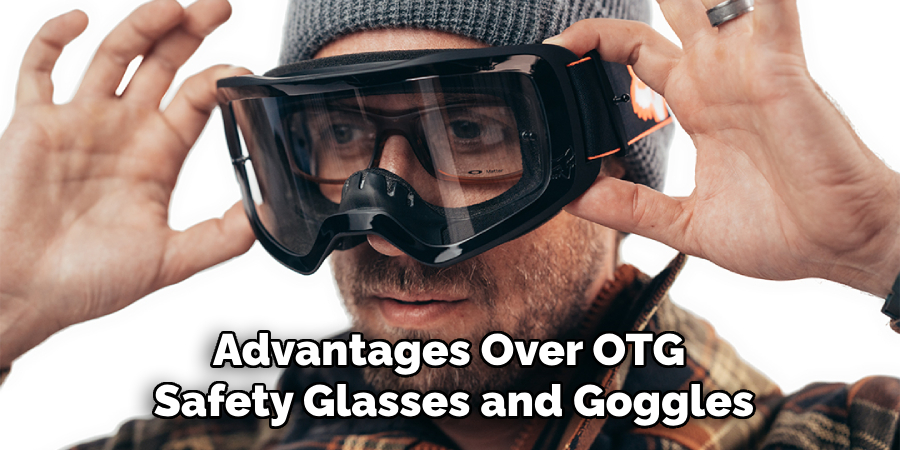
Maintaining and Caring for Your Safety Glasses
Proper maintenance and care are essential to ensure the longevity and effectiveness of your safety glasses. Regular cleaning and inspection should be part of your routine. Use a soft, lint-free cloth and a mild cleaning solution to gently remove dust, smudges, and other debris from the lenses. Inspect the frames and lenses for scratches, cracks, or any signs of damage that could compromise protection.
Proper storage is also crucial to avoid damage. Store your safety glasses in a hard case to protect them from impact, pressure, or accidental scratches when not in use. Avoid leaving them in environments with extreme temperatures or exposing them to harsh chemicals, as these can degrade the materials over time.
If your safety glasses show any signs of wear or damage, they must be replaced promptly. Worn-out or damaged glasses can fail to provide adequate protection, putting your eyes at risk. Ensuring that your safety glasses are always in optimum condition will provide continuous protection and enhance workplace safety.
Conclusion
Protecting your eyes in hazardous environments is crucial to ensuring long-term vision health and overall safety. Whether you work in construction, manufacturing, or any other field with potential eye hazards, choosing the right type of safety glasses for your needs is essential. Prescription safety glasses offer a practical and efficient solution by combining vision correction with robust safety features. Additionally, understanding how to wear safety glasses over glasses can provide a temporary fix if custom prescription safety glasses are unavailable.
Ensuring comfort, fit, and protection are top priorities while wearing safety glasses. A well-fitted pair minimizes distractions, enhances productivity, and provides consistent protection against workplace hazards. With proper maintenance and timely replacements, your safety glasses will continue to safeguard your eyes effectively. Remember, investing in high-quality safety eyewear is an investment in your health and well-being.
About
Safety Fic is a distinguished figure in the world of Diy design, with a decade of expertise creating innovative and sustainable Diy solutions. His professional focus lies in merging traditional craftsmanship with modern manufacturing techniques, fostering designs that are both practical and environmentally conscious. As the author of diy, Safety Fic delves into the art and science of Safety Fic-making, inspiring artisans and industry professionals alike.
Education RMIT University
(Melbourne, Australia) Associate Degree in Design (Safety Fic) Focus on sustainable design, industry-driven projects, and practical craftsmanship. Gained hands-on experience with traditional and digital manufacturing tools, such as CAD and CNC software.
Nottingham Trent University
(United Kingdom) Bachelor’s in diyfastly.com and Product Design (Honors) Specialized in product design with a focus on blending creativity with production techniques. Participated in industry projects, working with companies like John Lewis and Vitsoe to gain real-world insights.
Publications and Impact
In diy, Safety Fic his insights on indoor design processes, materials, and strategies for efficient production. His writing bridges the gap between artisan knowledge and modern industry needs, making it a must-read for both budding designers and seasoned professionals.
